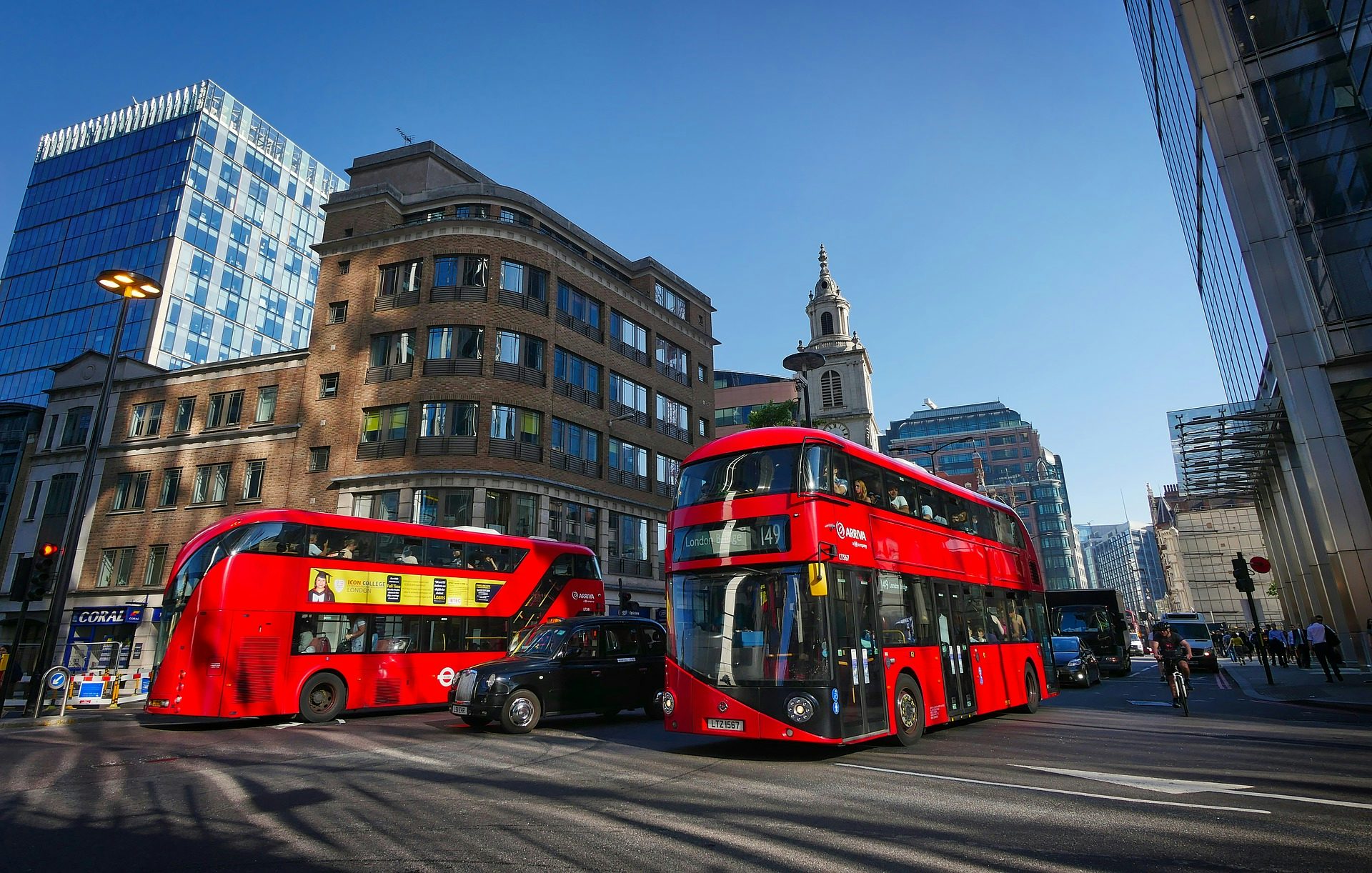
Many crashes occur at intersections - be careful and always approach an intersection at a safe speed that allows you to give way or stop in time.
What are unmarked crossroads?
Unmarked crossroads have nothing that “controls” the junction i.e. no ‘Stop’ or ‘Give Way’ signs or lines, no traffic lights and no police or other authorised person directing the traffic. Approach at a low speed and treat unmarked crossroads as if you face a 'Give Way' sign.
What does giving way to a driver or pedestrian mean?
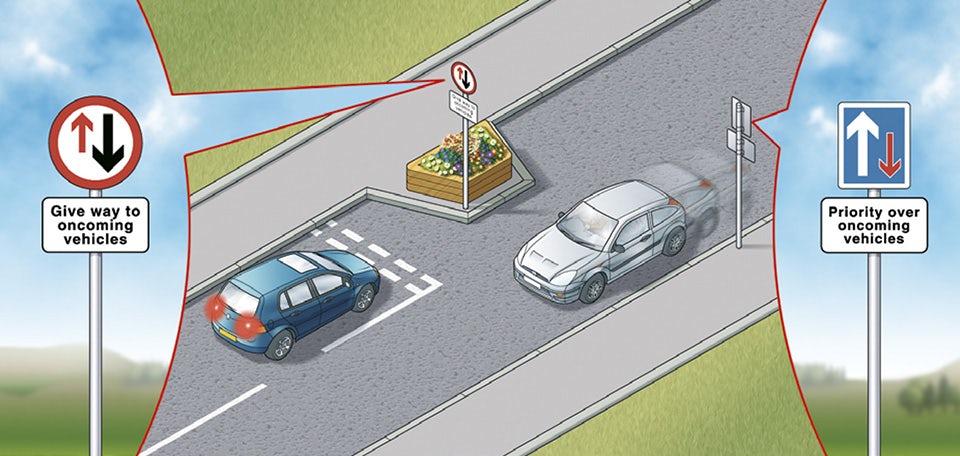
Giving way means slowing down or stopping to let another vehicle or pedestrian pass. When giving way, you must slow down or stop until the road is clear and it's safe for you to proceed.
Facing a ‘Give Way’ or ‘Stop’ sign

These signs are used to control traffic and are located:
- at junctions where caution is needed due to poor or limited visibility
- where vehicles on the other road have priority
‘Stop’ lines and signs
You MUST stop behind the line at a junction with a ‘Stop’ sign and a solid white line across the road. Wait for a safe gap in the traffic before you move off.
‘Give Way’ lines and signs
The approach to a junction may have a ‘Give Way’ sign or a triangle marked on the road. You MUST give way to traffic on the main road when emerging from a junction with broken white lines across the road.
General ‘Give Way’ rules
'Give Way' rules are designed to allow vehicles to move predictably in all situations where their paths cross each other.
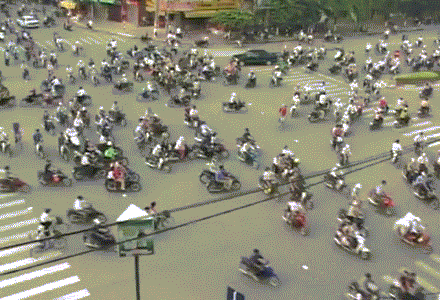
The most important rules are:
- Traffic on major roads has priority over traffic on minor roads.
- Vehicles travelling straight ahead or turning left has priority over traffic turning right. When turning right, you have to wait for a safe gap in oncoming traffic.
If turning, you must also give way to all pedestrians crossing the road that you are entering.
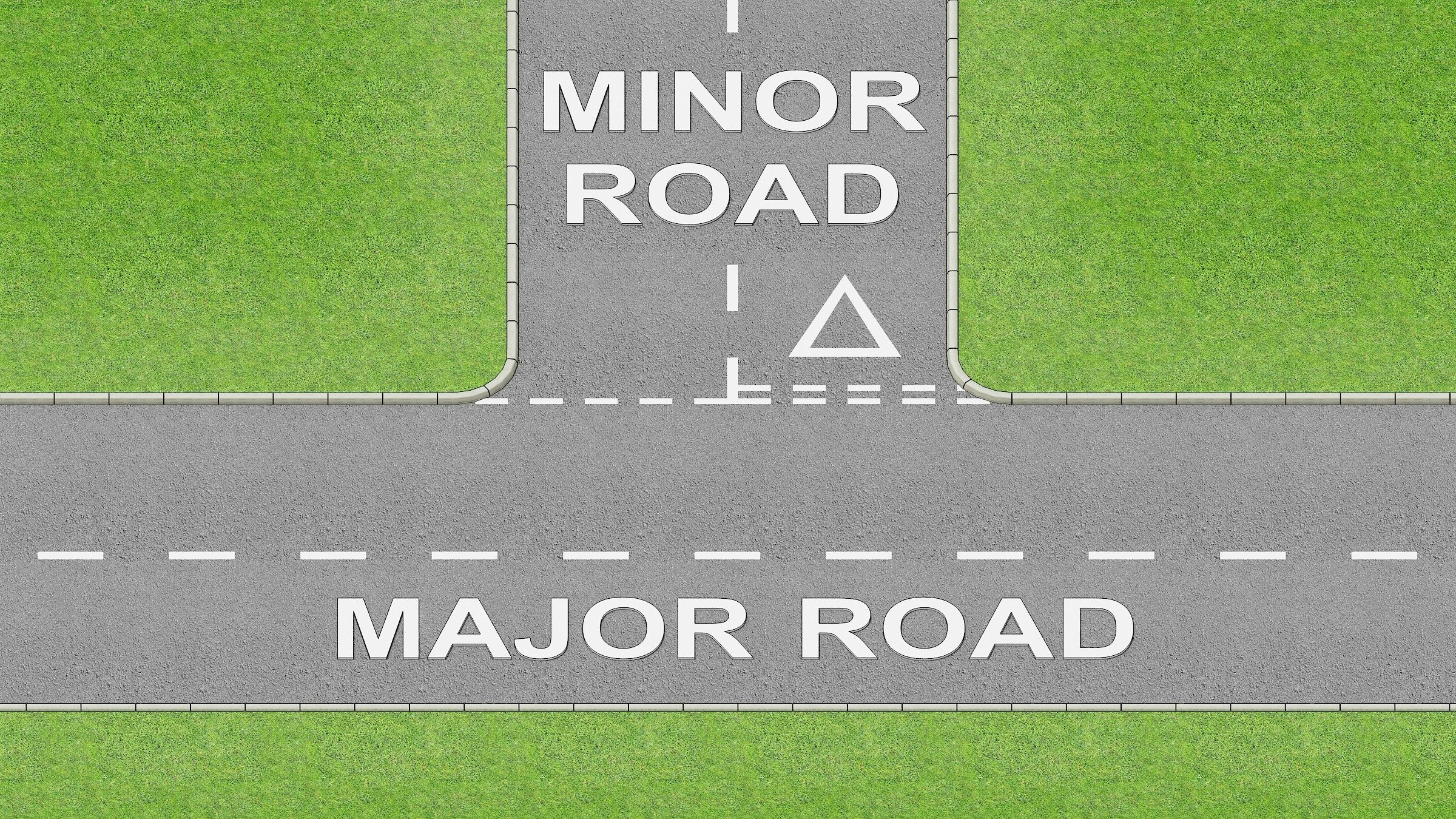
Some situations
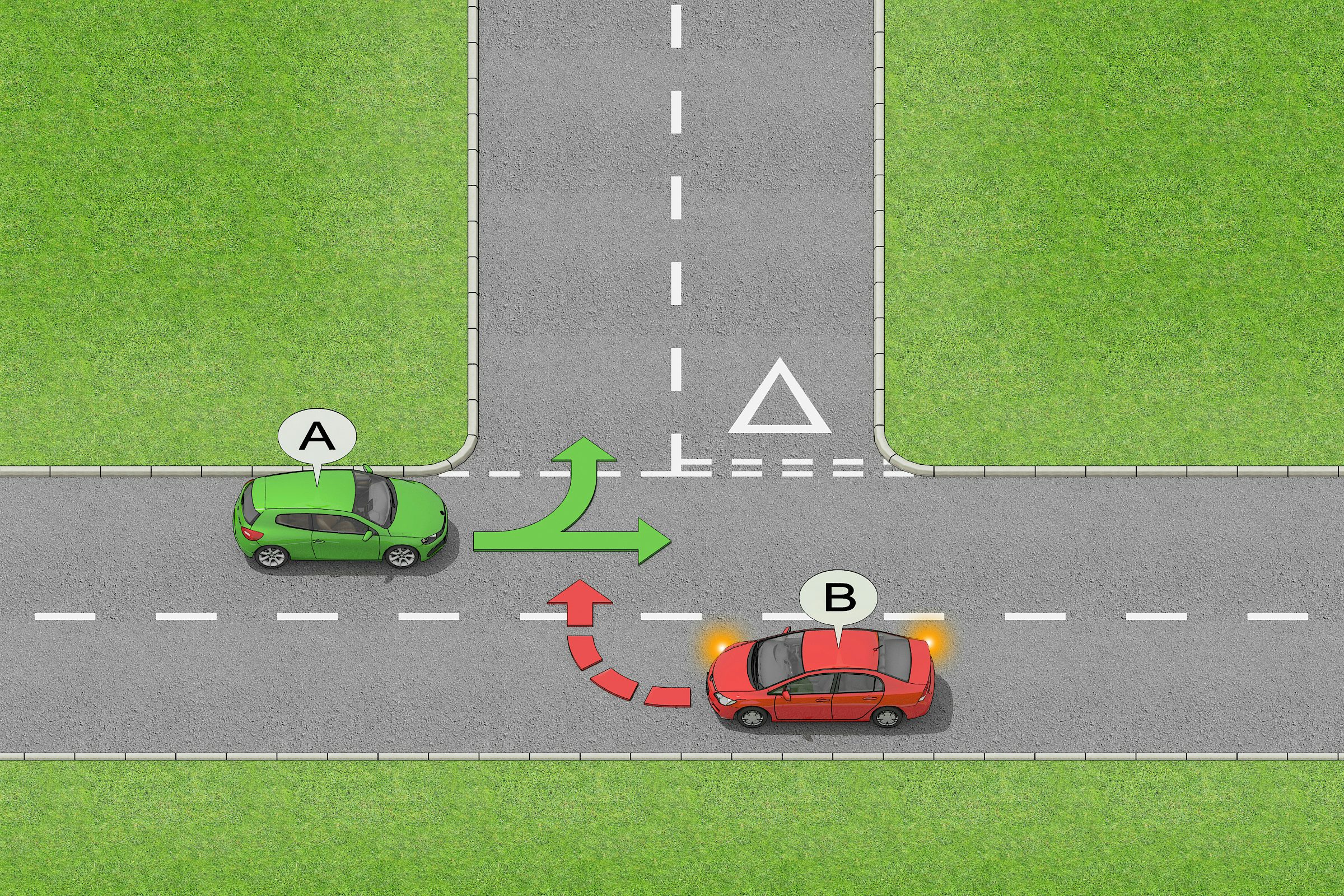
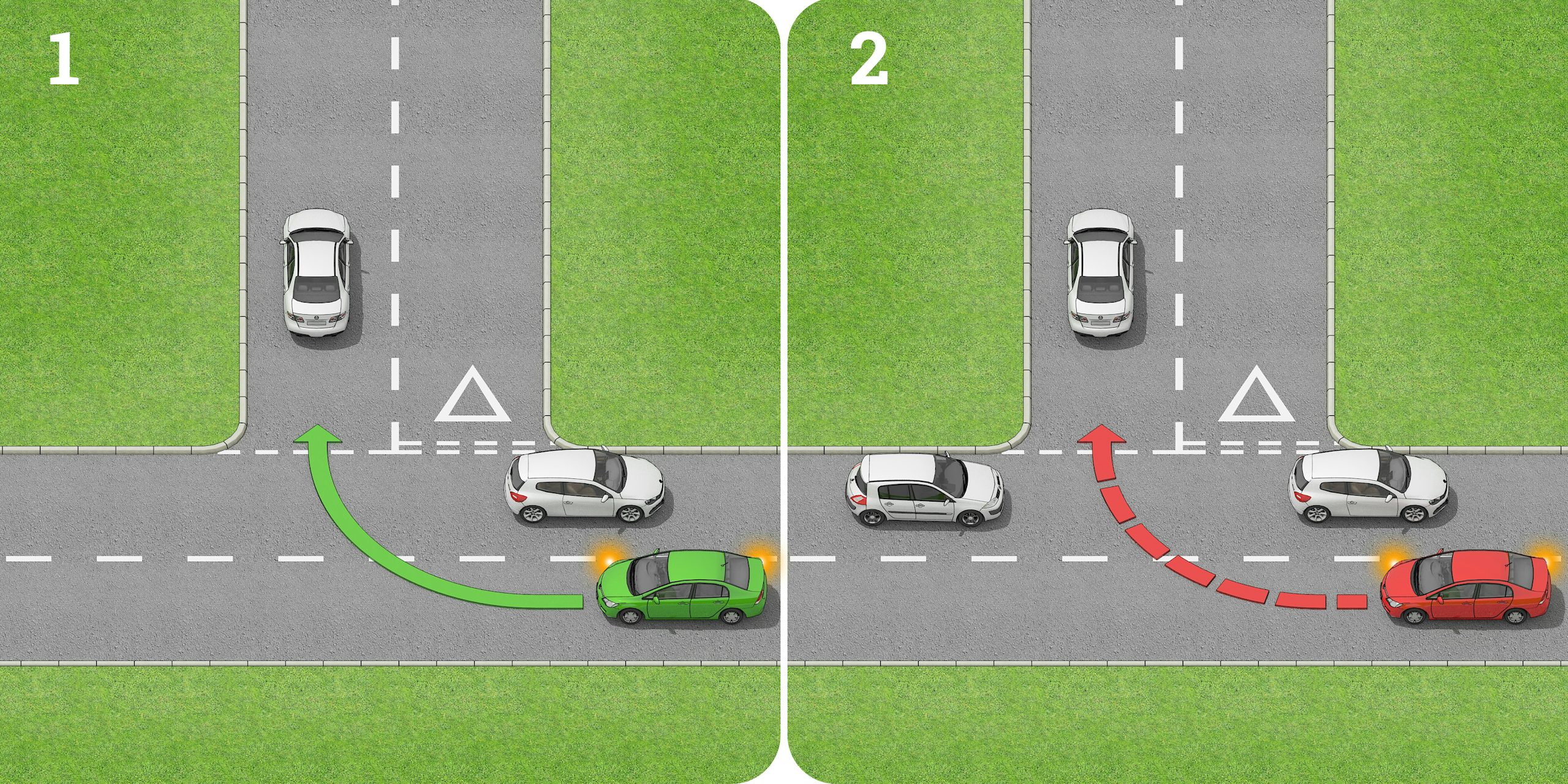
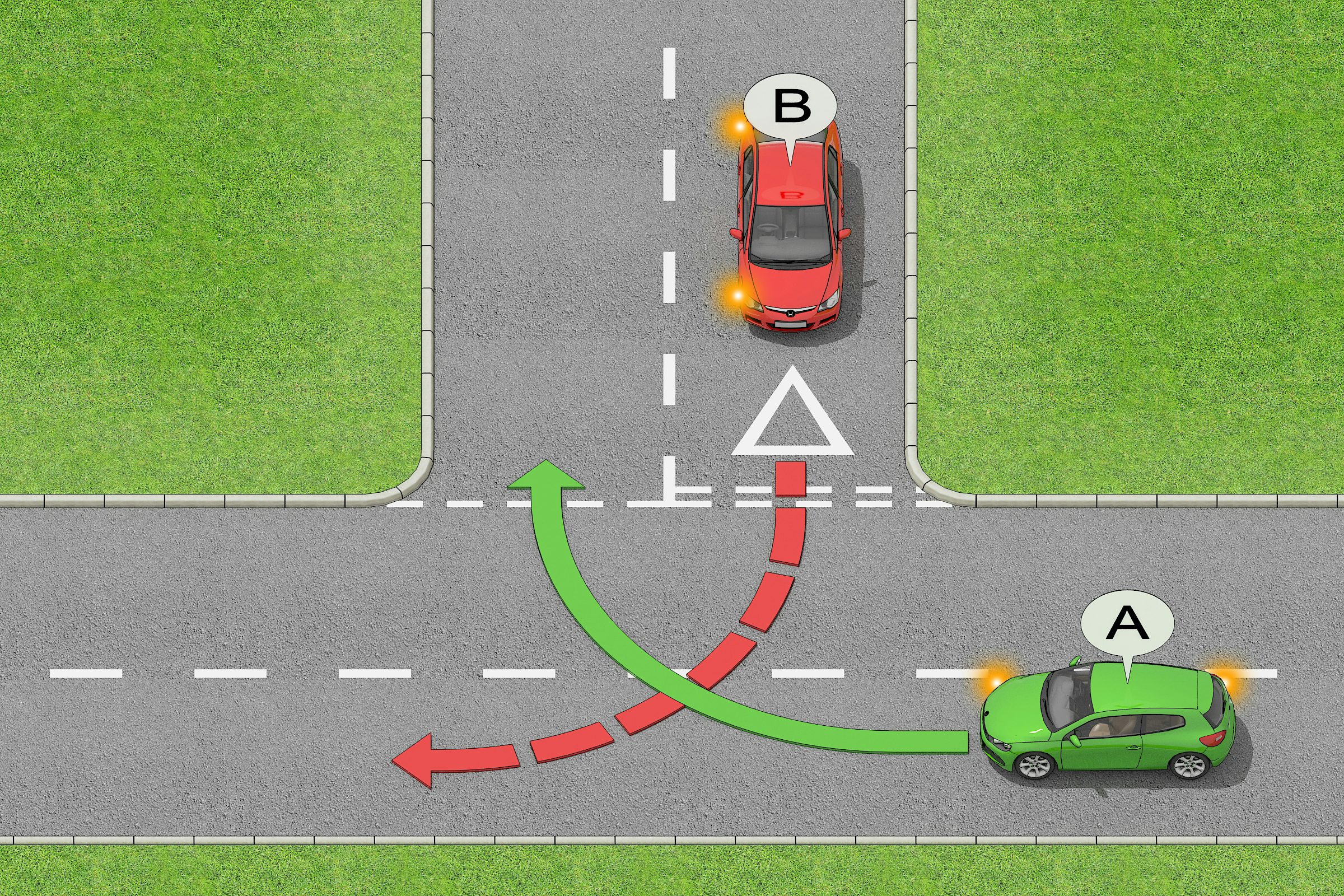
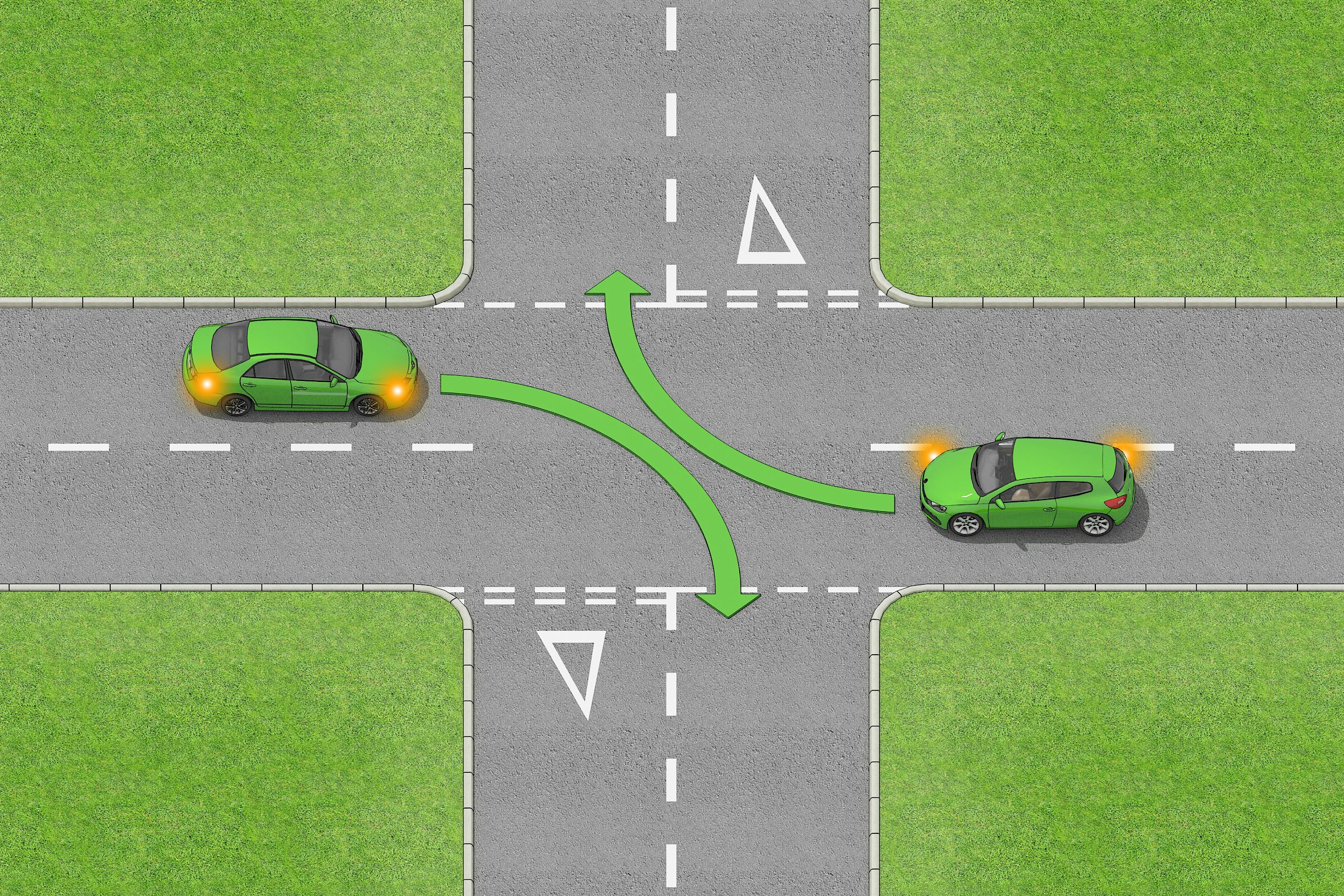

However, you should do your best to avoid a collision in every situation. If another driver does not give way to you even though you have priority, stop or give way to avoid a collision.

If the road that you wish to enter is blocked by other traffic, you should stay on the approach side until you see a big enough gap on the other side.
Giving way when changing lanes
You must always give way to traffic travelling in the lane that you are moving to.
Giving way when merging
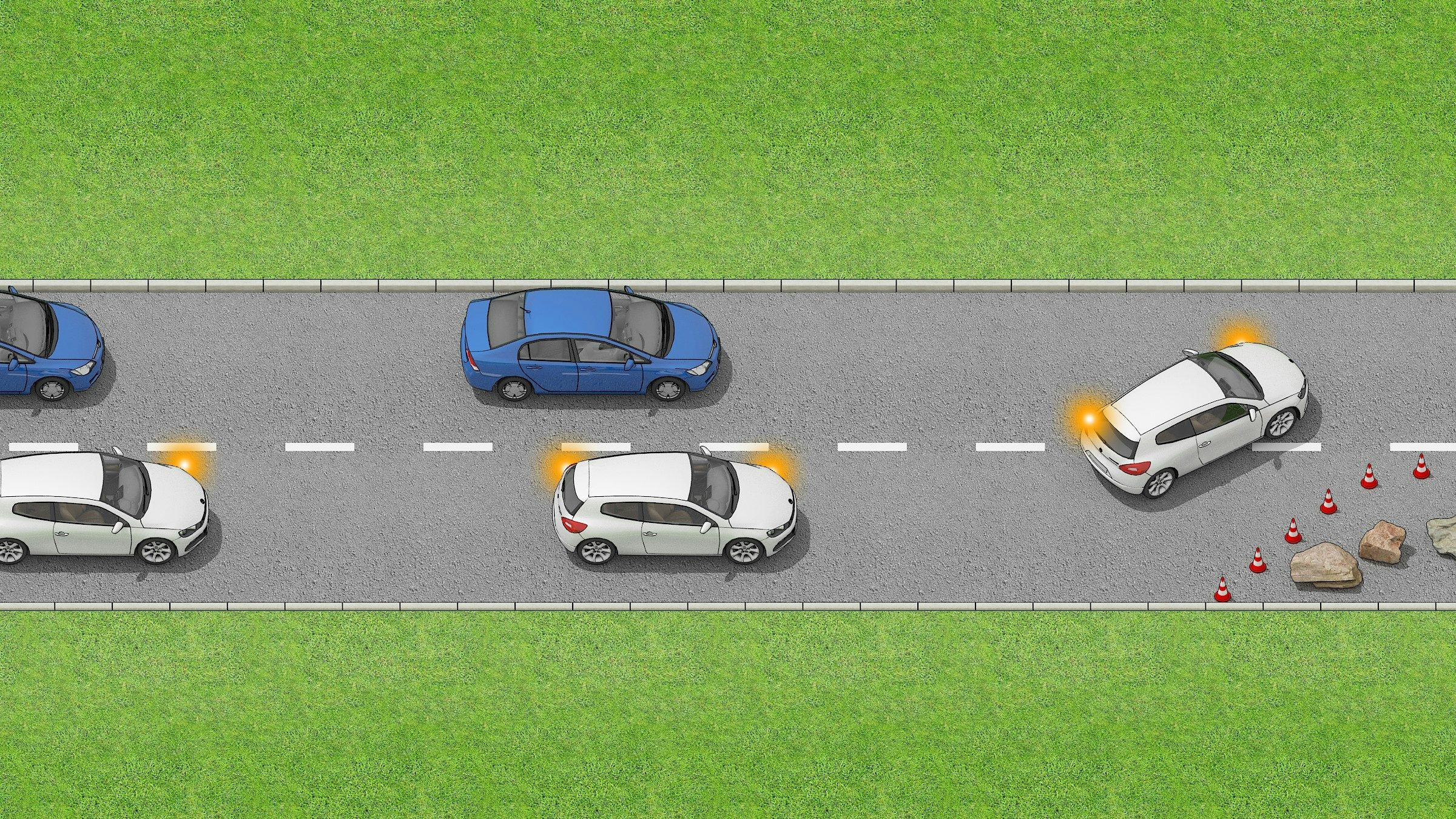
When the lane you’re in ends, you must merge.
- In light traffic, a simple lane change will do.
- In moderate to heavy traffic, a ‘Zipper Merge’ is an effective way to maintain the traffic flow going. The Zipper Merge is when drivers use both lanes and alternate into the open lane by merging in turn.
Merging in turn is recommended but only if safe and appropriate when vehicles are travelling at a very low speed, e.g. when approaching road works or a road traffic incident. It is not recommended at high speed. Indicate your intentions clearly to avoid confusion.
Giving way at crossings
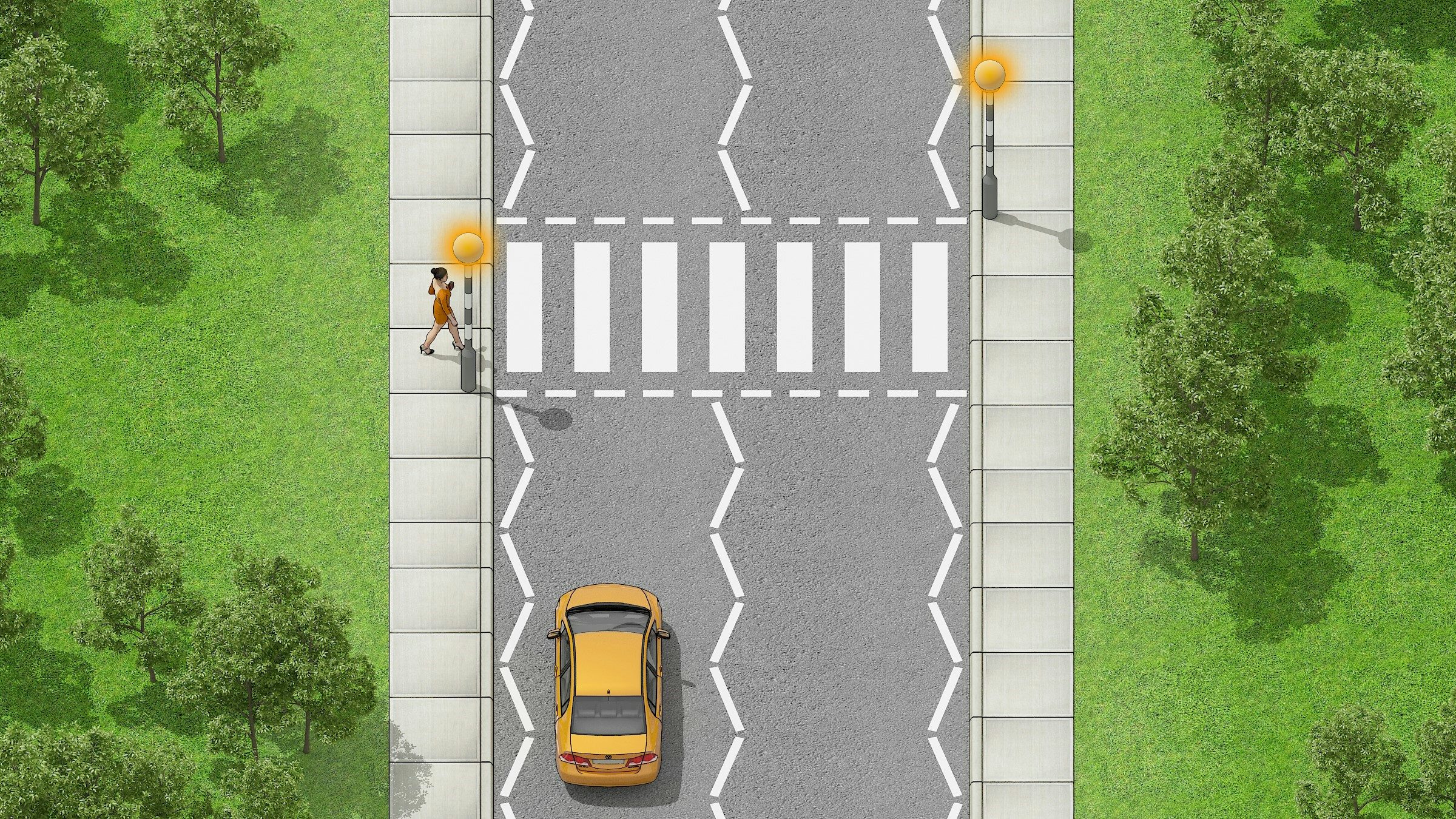
Give way to pedestrians and cyclists on or entering a crossing. Approach at a safe speed from which you are safely able to stop if anyone decides to cross. Do not overtake a vehicle that has stopped to give way at a crossing.
Giving way when passing obstructions
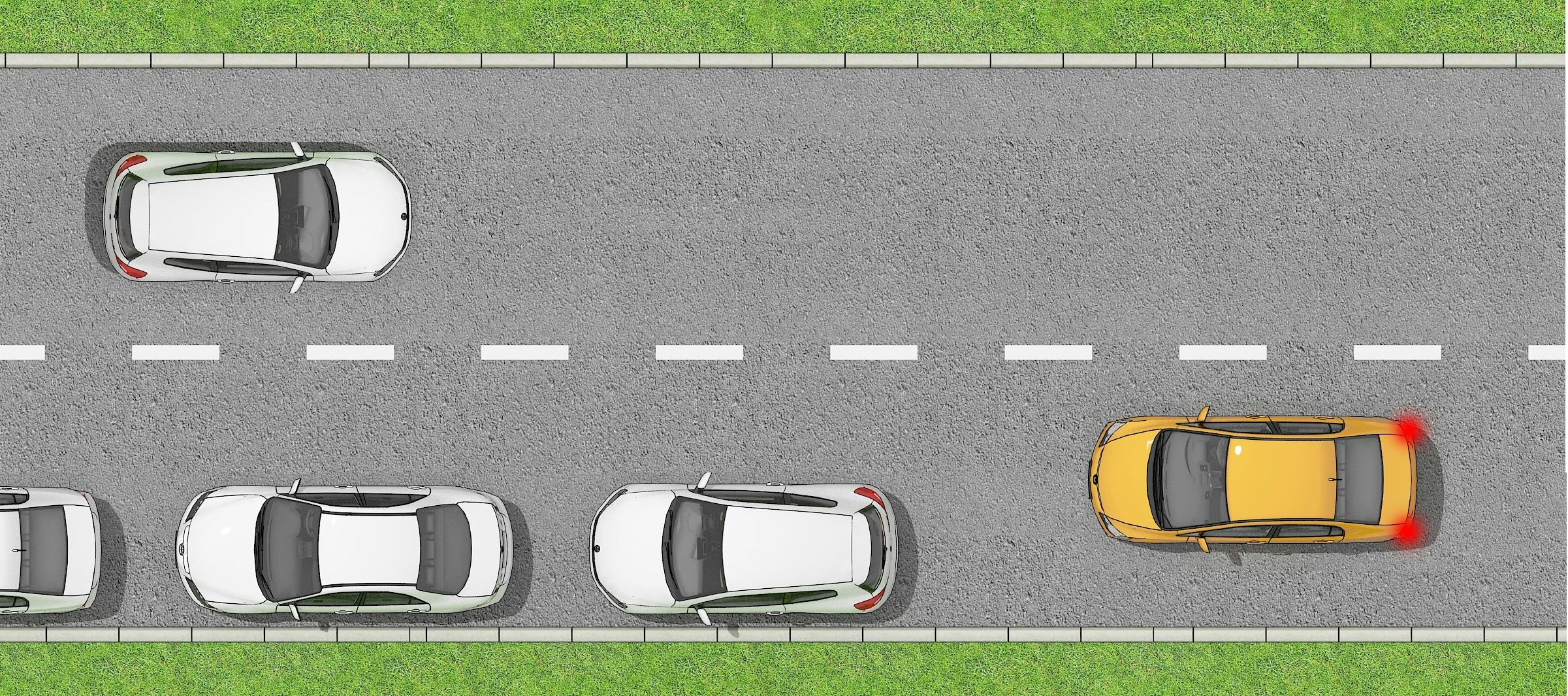
Give way to oncoming vehicles before passing parked vehicles or other obstructions on your side of the road.
Entering the traffic stream
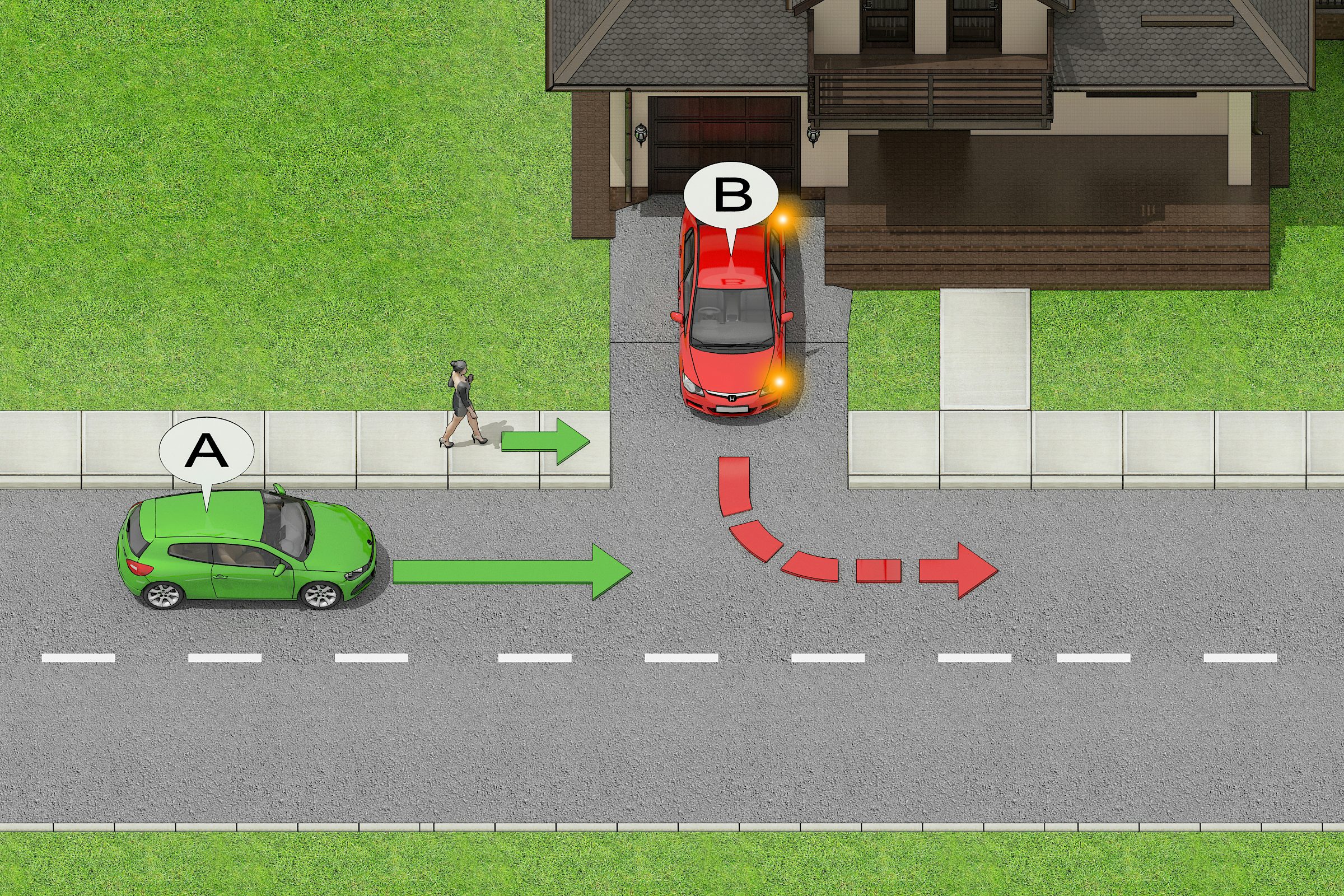
In general, you should give way when entering the traffic stream, such as when leaving a driveway or parked position.
Remember to always check the blind spot by looking over your shoulder just before you pull out to enter traffic.
Bridges
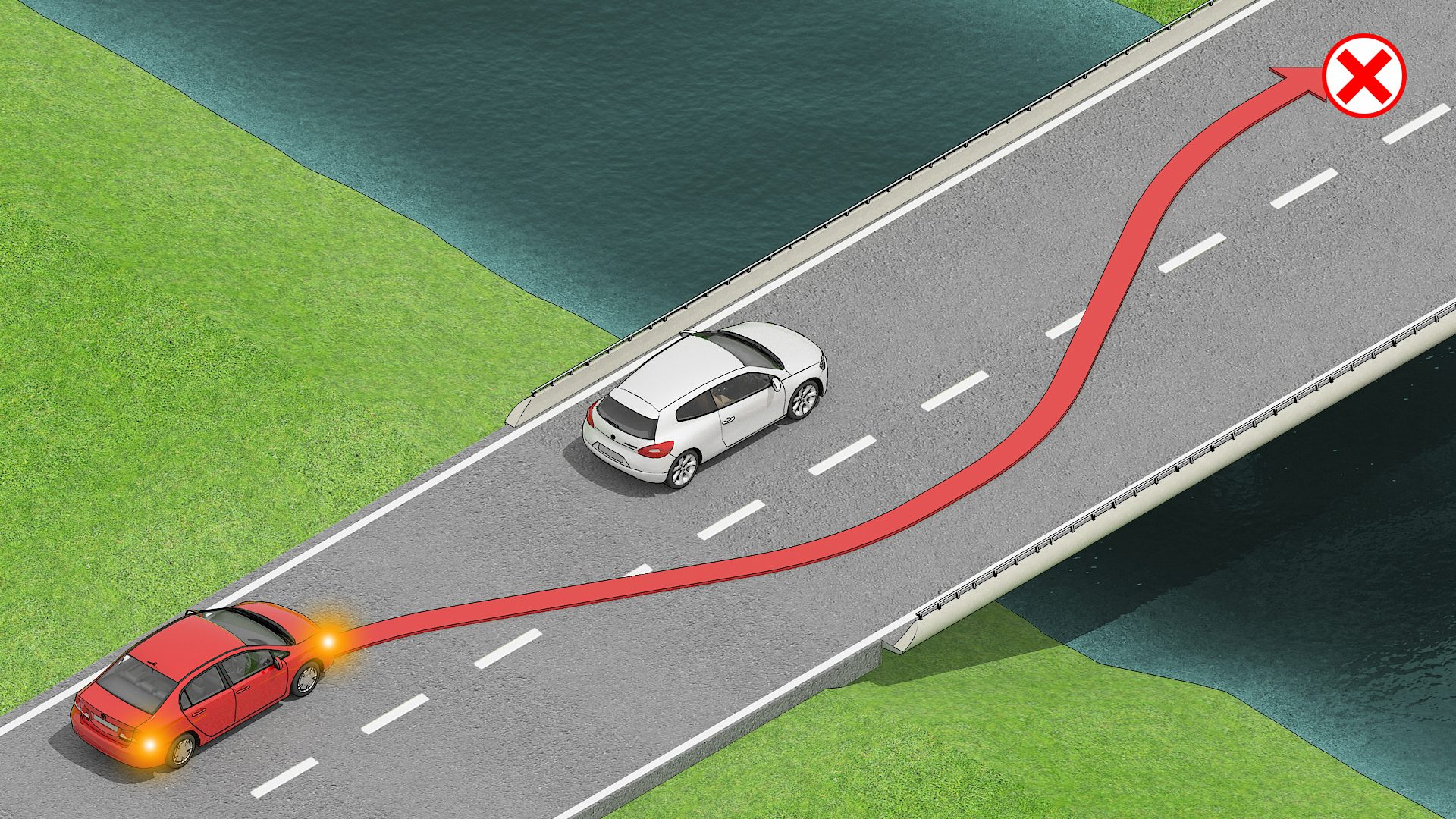
Bridges are often narrow and you should drive carefully to avoid a collision or accident. If the bridge is unable to fit two vehicles passing each other, give way to a driver who is approaching or is on the bridge
